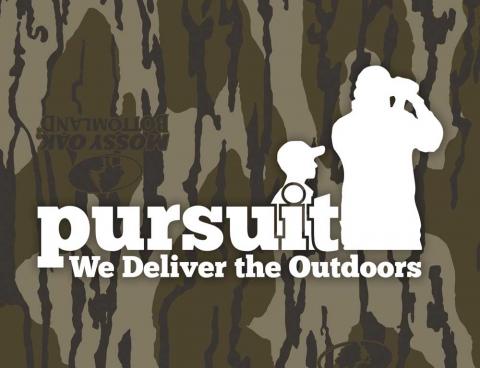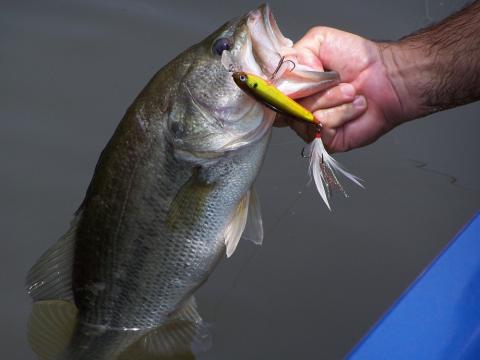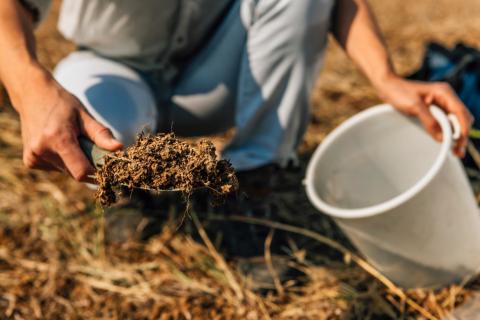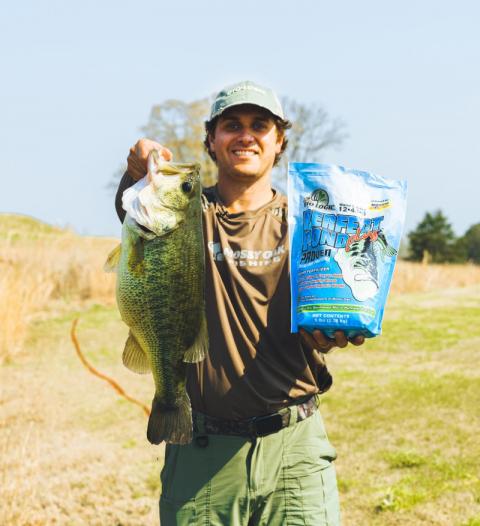Longtime, avid hunter for all species, Parrey Cremeans, is from Redding, California. He first started hunting antelope in 1985 and is a member of Mossy Oak’s ProStaff.
Bowhunting for a Trophy Antelope
 I started hunting antelope because it’s a big-game species here in the West, I could begin hunting in August each year, and I knew that to take an antelope with a bow was a really big challenge. This year – 2018 – I’m going to Nevada to hunt its antelope season that begins August 2, 2018. In most states, antelope seasons arrive around mid-August to the end of August or the first week in September. In California, we began hunting deer the second week of July in the Coastal Zones.
I started hunting antelope because it’s a big-game species here in the West, I could begin hunting in August each year, and I knew that to take an antelope with a bow was a really big challenge. This year – 2018 – I’m going to Nevada to hunt its antelope season that begins August 2, 2018. In most states, antelope seasons arrive around mid-August to the end of August or the first week in September. In California, we began hunting deer the second week of July in the Coastal Zones.
I’ve hunted antelope every way you can, but I’ve found that hunting them with a bow and arrow is probably the most challenging. Since antelope usually run in herds, that means that numerous eyes are looking for you. All those eyes can see better than you can. That’s why I’ve learned that to be the most successful with a bow and arrow I need to set up on a water hole in a pop-up blind.
Most antelope hunting in the West is on public lands, and you generally can identify numerous water holes on public land. I use Google Earth and topographical maps to pinpoint the water holes I may want to hunt before I ever go into the field. One of the problems associated with hunting antelope is that in most states you must go through a lottery and be drawn for certain areas. There are some antelope tags available over the counter in Wyoming, South Dakota and Colorado. But usually these over-the-counter tags are only for bow hunting.
To draw a good area to hunt where you’ll have the opportunity to take a trophy antelope, you may have to put in for a tag for several years before you get drawn. For instance, the tag I’ve drawn in Nevada took me 15 years of entering the lottery there to draw. For bow season, this unit allots 11 total tags. Only one of those tags is available for a non-resident hunter. That’s the tag I drew. So, I’ll be the only non-resident bowhunter hunting this Nevada unit during bow-and-arrow season. This unit is about 100 miles long and 100 miles wide. It’s along the border between California and Nevada.
Antelope have a hard time during the winter months. For that reason, herd numbers often are up and down, depending on the year. I’ve particularly wanted to hunt this unit because it’s one of the better trophy animal units in the nation. I’ll be trying to take a Boone & Crockett antelope with 80 inches of horn. Eighty inches is honorable in the B&C book, but 82 inches is a permanent record. One of the big problems with hunting antelope is judging their horns in the field.
If you’re coming out West to hunt antelope, you must be able to shoot accurately – at least out to 60 yards. Too, you must have an 80-yard pin on your bow and feel fairly comfortable taking that 80-yard shot. If you’re a really good archery shot and feel comfortable at taking a 100-yard shot, then a 100-yard shot isn’t unthinkable when hunting antelope. However, we all realize that many things can interrupt an arrow’s flight at 100 yards. If you’re hunting out of a blind over a water hole for antelope, your shot probably will be 30 yards or less.
Longest Bow Shot for Antelope
I was hunting in Wyoming one year. We’d parked our truck behind a hill, and the antelope were right on the other side of the hill. After crawling up to the top of the hill, I took my first shot when the antelope was at 61 yards. The arrow was well-placed, and I knew that antelope would go down. Later I saw that the arrow had gone just behind the antelope’s heart and right below its lungs. The antelope took off running and then stopped at 80 yards away. I believe as long as an animal is on its feet after I make a shot that I need to put another arrow in it. I knew I could make the 80-yard shot, so I didn’t hesitate.
The antelope went down after my second arrow hit him. I took this follow-up shot at 80 yards because the wind wasn’t bad that day, and I wasn’t concerned about arrow drift. If the wind had been blowing hard, I doubt I would have taken this shot. I don’t believe anyone can practice enough shooting with a strong wind to make a really accurate shot. When the wind’s blowing 25-35 mph on the desert, many things can happen to your arrow flight before your arrow hits the target.
Regulations Governing Hunting Antelope and Game Cameras

There are two ways to find antelope and where they’re watering – either using a game camera or setting up a spotting scope a long ways off from the watering hole. Although game cameras are fairly popular today, be sure and check the regulations on using game cameras in the state where you’re hunting. Many states don’t allow a hunter to use a game camera to monitor a water hole. For instance, Nevada, where I’ll be hunting, doesn’t allow anyone to use a game camera, so I’ll be taking a spotting scope, a tripod and binoculars with me. Some states that allow you to use a game camera only will let you set up a camera a significant distance from a water hole to monitor the antelope coming down the trails they’ll use to reach the water hole.
If you’re planning to hunt from a blind at a water hole, you also need to know how long you can sit in your blind legally at the water hole. Some states only allow an archery hunter to sit in a blind for a certain period of time, so that the antelope do have time to come to a water hole and use it without the possibility of being spooked or harvested. Just don’t forget that each state that homes antelope has its own set of rules for hunting antelope. Every year you plan to hunt antelope, you must check that state’s regulations governing hunting antelope. Often the states change these regulations every year.
Best States for Antelope Hunting
If you’re planning a one-time trip to add antelope to your hunting bucket list, I suggest you try to hunt Wyoming. You usually can find a good unit for bow hunting antelope if you buy a tag in Wyoming. Your odds of drawing a tag in Idaho are generally good too. Idaho is one of the few western states that doesn’t have a preference-point system. All the hunters there go into the same drawing, no matter how many years you’ve put in for an Idaho tag. New Mexico doesn’t have a lottery preference-point system either. Everyone has the same chance of drawing an antelope tag in Idaho and New Mexico. If you talk to a lot of people who hunt antelope, most agree that Wyoming is the best place to hunt for the most success. You can hunt with a family group or a group of friends in Wyoming. Camp out and enjoy a fun antelope hunt there.
If you have a four wheeler, take that with you. Then you can ride a vast amount of country in Wyoming and see numbers of antelope. I believe that Wyoming has about a 40-percent harvest of antelope each year, because so many antelope are there. I’ve talked with plenty of people who have told me that the entire group they’ve gone with to Wyoming has taken antelopes. Also in Wyoming, you can get doe tags. So, if you just want to hunt and take an antelope, Wyoming is the state I recommend.
About four years ago, I hunted antelope in Oregon. That tag took me 16 years to draw, and I spent 9 days in a blind over a water hole. During that time, I spotted between 600-800 antelope from my blind. However, I saw only one antelope buck that I wanted to take home with me. But when he came to the water hole, he walked right between two doe antelope. The buck was at 42 yards - a shot I knew I could make - but I also knew if I shot the buck, my arrow would have gone through not only the buck but also the two does standing beside him. So, I didn’t take an antelope on that hunt – even after the huge numbers of antelope I saw and spending all that time in the sun. I took plenty of pictures from my blind and had a great time seeing 80-100 antelope every day with plenty of legal bucks.
I’ve had some hunters say, “Parrey, you’ve waited 16 years for that hunt. I can’t believe you didn’t take an antelope.” But I don’t need to go hunting to just take an antelope. If I’m applying for a tag to take a trophy animal, and I don’t find that better quality animal or the antelope I’m trying to take doesn’t give me a good shot, I’m not just going to take an antelope. Although my family loves to eat antelope meat, when I’m hunting for a trophy, I don’t mind eating the tag if I don’t have the opportunity to take the size of animal I went on the hunt to take.
If you’re getting ready for an antelope hunt, make sure you have the right gear, mapping system and essentials, like water.




























